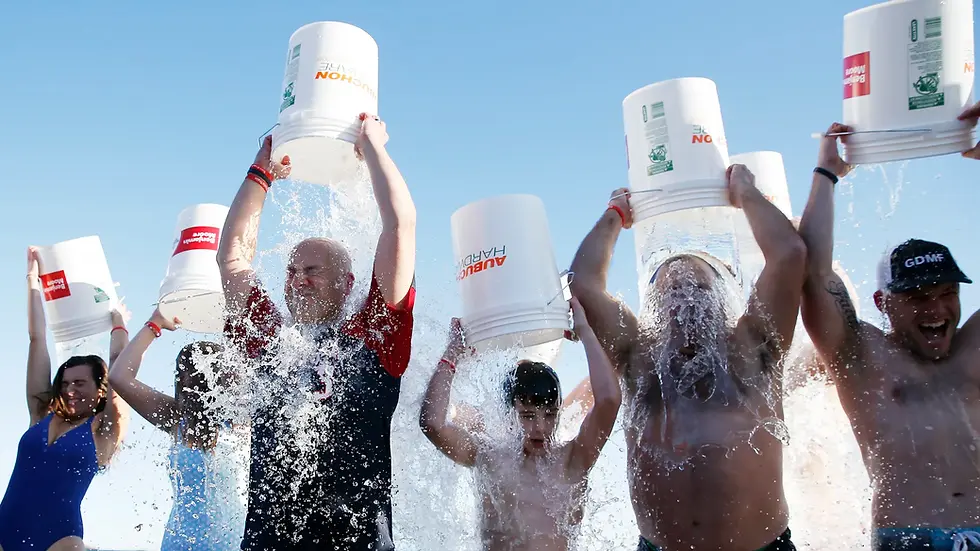Your Capital Campaign Needs a Communications Plan
- Frances Roen
- 1 day ago
- 3 min read
Updated: 5 hours ago
If you’re planning a capital campaign, you’re probably thinking about donor lists, gift tables, and campaign chairs. But there’s one critical element that often gets overlooked: your campaign communications strategy.
At Fundraising Sol, we like to say that communications aren’t just what you say—they’re how you build energy, trust, and ownership across your community. Done right, your communications plan becomes the backbone of the campaign. Done wrong (or not at all), it becomes a missed opportunity to engage, inspire, and inform.
Here’s how to think about it.
What Is a Campaign Communications Plan?
A campaign communications plan is your roadmap for how you’ll keep people informed and inspired throughout your capital campaign journey.
It outlines:
Who your audiences are (e.g., major donors, congregants, staff, volunteers, media)
What key messages you want to share (and which ones you don't!)
When and how often you’ll communicate
Which channels you’ll use (email, social media, print, events, sermons, etc.)
Who’s responsible for creating and delivering each piece
This plan evolves over time—from quiet phase to public launch to final push—but thinking through your strategy early helps avoid confusion, duplication, and missed moments.
Start with Your Core Audiences
Every campaign has a few key audiences who need special attention. Your communications plan should include tailored strategies for:
Internal stakeholders (board, staff, campaign leadership): They need early alignment and talking points.
Major donors and lead prospects: Personalized updates and previews can build trust and momentum.
General supporters or members: They need to feel part of the journey—even if they’re not giving the biggest gifts.
Wider community and media: Especially in the public phase, visibility matters.
Don’t Just Inform—Inspire
Campaign communications aren’t just about sharing updates. They’re about building belief in your vision. Think stories, not just stats. Think images, not just timelines.
Too many campaigns default to dry, logistical updates. Instead, consider:
Sharing personal stories of impact
Offering sneak peeks or site tours
Featuring donor testimonials or quotes
Using visuals that make the goal tangible
Map Your Campaign Milestones (Starting with Feasibility!)
Use a timeline to map your campaign phases—including your feasibility study—and what you’ll communicate in each based on the phase and the goal:
Phase: Pre-campaign
Goal: Build readiness
Sample Communications: Internal talking points, board FAQ, campaign case preview
Phase: Feasibility study
Goal: Gather feedback
Sample Communications: Scripts for interviews, update emails to participants, internal recaps
Phase: Quiet phase
Goal: Secure lead gifts
Sample Communications: Personal updates, one-pagers, major donor packets
Phase: Public launch
Goal: Inspire broad support
Sample Communications: Website updates, kickoff events, social media push
Phase: Final phase
Goal: Finish strong
Sample Communications: Countdown graphics, challenge match emails, gratitude posts
Plan for Leadership Visibility
If your Executive Director or Pastor will be a campaign spokesperson, plan for how and when they’ll speak:
Video messages
Sermons or presentations
Blog posts or personal letters
Donor meetings
You don’t need to do everything at once. But consistency over time builds trust.
Keep It Simple, and Stick With It
Campaign communications don’t need to be fancy—they just need to be clear, consistent, and mission-aligned.
Keep asking:
Does this message reflect our campaign vision?
Is it clear what we’re asking people to do?
Are we telling the story of what this campaign will make possible?
Bonus Tip: Don’t Forget Internal Comms
Your board, staff, and volunteers are your biggest ambassadors. Make sure they’re not hearing things secondhand. A short internal update every 4–6 weeks can go a long way.
Final Thought
Campaigns are a marathon, not a sprint—and communication is the water station along the way. If your campaign is worth running, it’s worth talking about clearly and often.
Interested in a Campaign Communications Template to help you get started?
Drop a "Comms" in the comments or send us a message—we’re happy to share!

Founder of Fundraising Sol and a fundraising strategist with two decades of experience. She is deeply passionate about relationship building, individual donor work, and supporting nonprofit professionals’ health and wellness to enable them to deliver their best work.



Comments